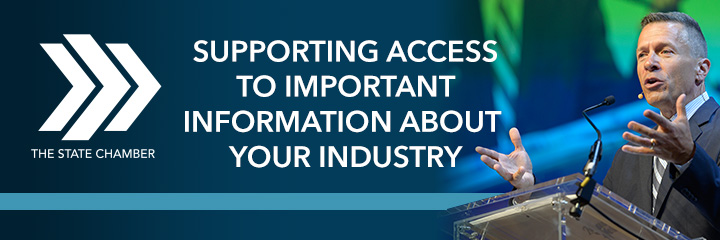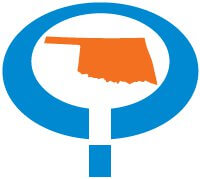
(Editor’s note: This story was authored by Jennifer Palmer of Oklahoma Watch and appears here in accordance with the non-profit journalism organization’s republishing terms.)
Patients in Oklahoma will pay one of the highest tax rates for medical marijuana among the 30 states that currently offer it if State Question 788 is approved by voters this month, according to an Oklahoma Watch analysis.
That’s because the Oklahoma Tax Commission has determined purchases will be subject to the 7 percent tax in the proposal – an excise tax – plus regular state and local sales taxes. That would push buyers’ total taxes to about 16 percent or more.
Paula Ross, a spokeswoman for the Oklahoma Tax Commission, said because there’s not currently a statute exempting medical marijuana from sales tax, it would still apply.
Total sales taxes in Oklahoma average 8.9 percent.
Both supporters and opponents of the initiative have not cited or weren’t aware of the higher total tax rate that would be charged should voters approve medical marijuana in the June 26 primary. There has also been little discussion about how the tax revenue will be spent or how much it will be, particularly for schools, which are in line to get additional funds.
What the proposal says
The initiative petition for medical marijuana, filed last year, calls for a 7-percent tax on medical marijuana “collected at the point of sale.” The language may suggest a sales tax, but instead it’s an excise tax, similar to the state’s additional tax on alcohol. So patients here could end up paying total taxes of 16 cents on the dollar, in addition to $100 for a two-year medical marijuana license.
If the proposal passes, the Legislature could approve a bill with additional regulations and could even adjust the tax rate. But for now the measure calls for one of the highest tax rates in the nation.
Washington appears to be the only state taxing medical marijuana at a higher rate than what Oklahoma’s state question proposes. Washington, which in 1998 became one of the first to legalize medical marijuana, revamped its marijuana regulations in 2016 and now both medical and recreational are subject to a 37 percent marijuana excise tax. Previously, medical marijuana was only subject to the regular sales tax.
A handful of states exempt medical marijuana from sales taxes, according to the Marijuana Policy Project, a D.C.-based nonprofit that works to legalize marijuana. (All states but one, Illinois, exempt prescription drugs from taxes.)
| State | Year Medical Marijuana Approved | Tax Rate on Sales |
| Arizona | 2010 | 5.6% sales tax, plus local taxes |
| Arkansas | 2016 | 4% plus 6.5% sales tax |
| California | 1996 | Tax-exempt for card holders |
| Colorado | 2000 | 2.9% state sales tax, plus local taxes |
| Florida | 2016 | Not taxed |
| New York | 2014 | 7% excise tax |
| Washington | 1998 | 37% excise tax |
Funding estimates vary
Voters have heard little, if anything, about the proposal’s potential to raise money for schools — even though it would direct three-fourths of the revenue above what is needed to regulate the industry into common education.
That’s probably because it could be a little, or it could be next to nothing.
The Vote Yes on 788 group has estimated in the second year after passage, medical marijuana would generate $10 million to $30 million in state revenue above regulatory costs.
That would bring schools a small addition, considering the state Department of Education’s total budget is $2.8 billion for the upcoming fiscal year, but it could replace some of the funding cuts in recent years.
Frank Grove, chair of the Vote Yes on 788 political action committee, said proponents haven’t really focused on the school-funding aspect except during the teacher walkout.
“We don’t want people to over-estimate the effect this will have,” Grove said. “It’s about compassionate care more than a revenue-maker.”
In addition to the taxes, licensing fees for patients, retailers, growers and dispensaries would go to the state Health Department for regulation costs.
Another possibility is that all the revenue from medical marijuana sales could be used by the Health Department to regulate the industry— which is what the SQ 788 Is Not Medical Coalition, a group opposed to the proposal, says is likely to happen.
How other states have fared
States with medical marijuana have found the programs to be cost-neutral or revenue generators, according to the Marijuana Policy Project.
Colorado, for instance, generates about $10 million in revenue from the 2.9 percent sales tax on medical marijuana, according to the Tax Foundation. The state also has recreational marijuana, which is taxed significantly more.
In New York, medical marijuana generated $1 million in its first year through a 7 percent excise tax, or just a quarter of the $4 million the state expected, according to news reports. However, New York’s program has been criticized as being one of the most restrictive, and the state has since expanded the medical conditions to qualify.
Estimated revenue for neighboring Arkansas is about $3.5 million once the program matures, according to the Arkansas Department of Finance and Administration. Voters approved medical marijuana in 2016 but it has been held up in the courts. Medical marijuana there is taxed at 4 percent plus the regular 6.5 percent sales tax.
Another lottery?
Grove said another reason voters haven’t heard about the proposal’s potential to raise money for education is it might remind them of the Oklahoma Lottery.
“It’s just a controversial issue due to the cultural memory of liquor by the drink, horse racing, and gambling initiatives that had a lot of promises for education funding,” Grove said.
Public perception is that the lottery, which was billed as a school funding solution, isn’t helping schools. But the lottery is on track to contribute nearly $63 million to education funding this fiscal year, up from $53 million in 2017.
Similarly, Colorado voters were promised money for schools when they approved recreational marijuana in 2012. Combined sales of medical and recreational marijuana topped $1.5 billion in 2017. Yet Colorado teachers, whose total pay is slightly higher than that of Oklahoma teachers, staged a walkout in April protesting a need for higher salaries and classroom funding.
The first $40 million in Colorado’s annual marijuana revenue goes into a designated fund for school buildings. But that’s a small fraction of the $18 billion in capital construction needs for schools statewide, according to a Denver Post report. Marijuana tax revenue did contribute $90.3 million to the K-12 education budget in 2017, or about 1.6 percent of its $5.6 billion budget.
The Tax Foundation, an independent tax policy nonprofit in D.C., cautions policymakers from setting taxes too high – because it could cause consumers to continue buying on the black market – and from relying on marijuana taxes for core services.
“If you’re trying to use this money to supplement something like education, a core service, that can be a little risky,” said foundation spokesman John Buhl.






















